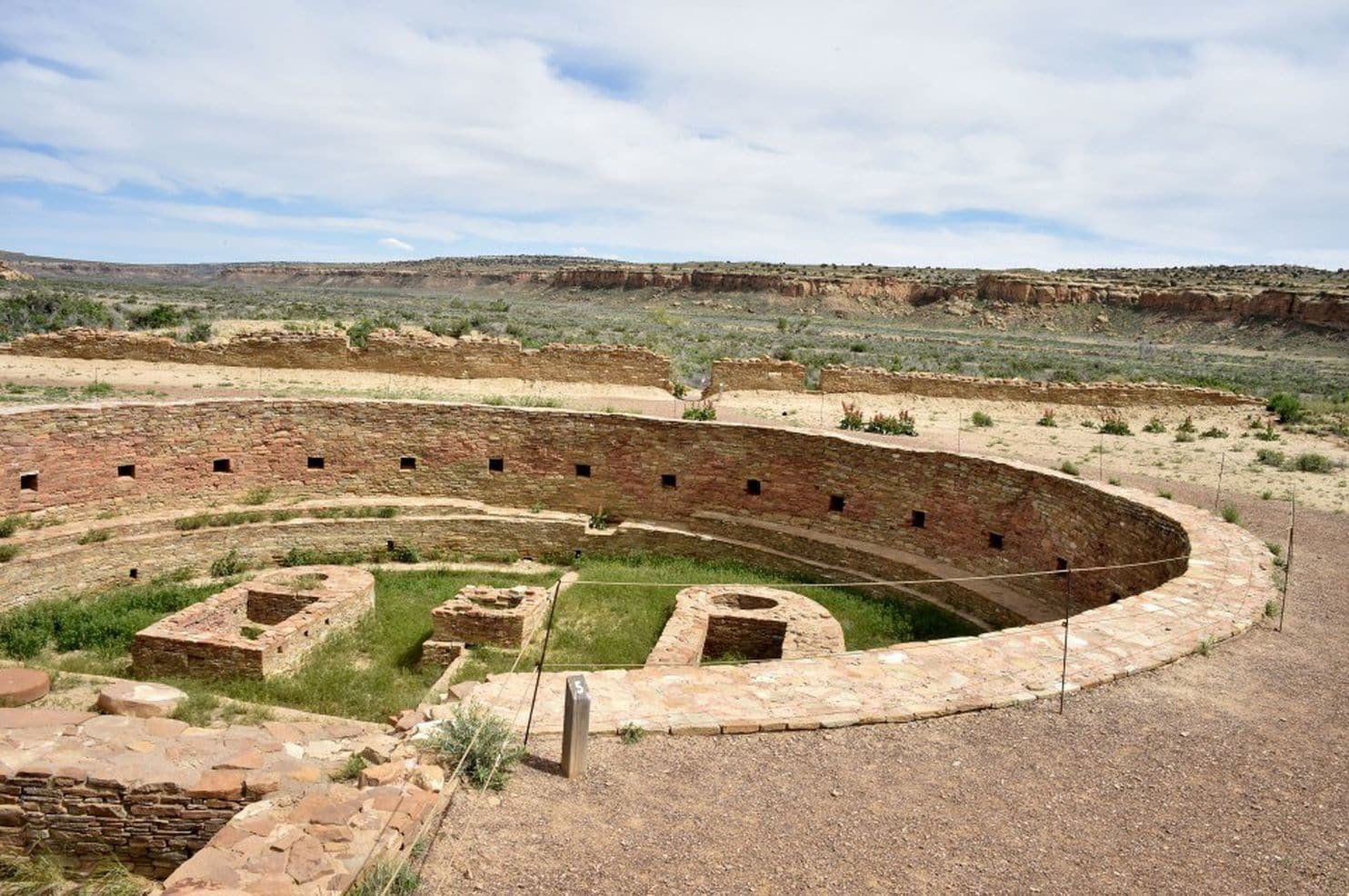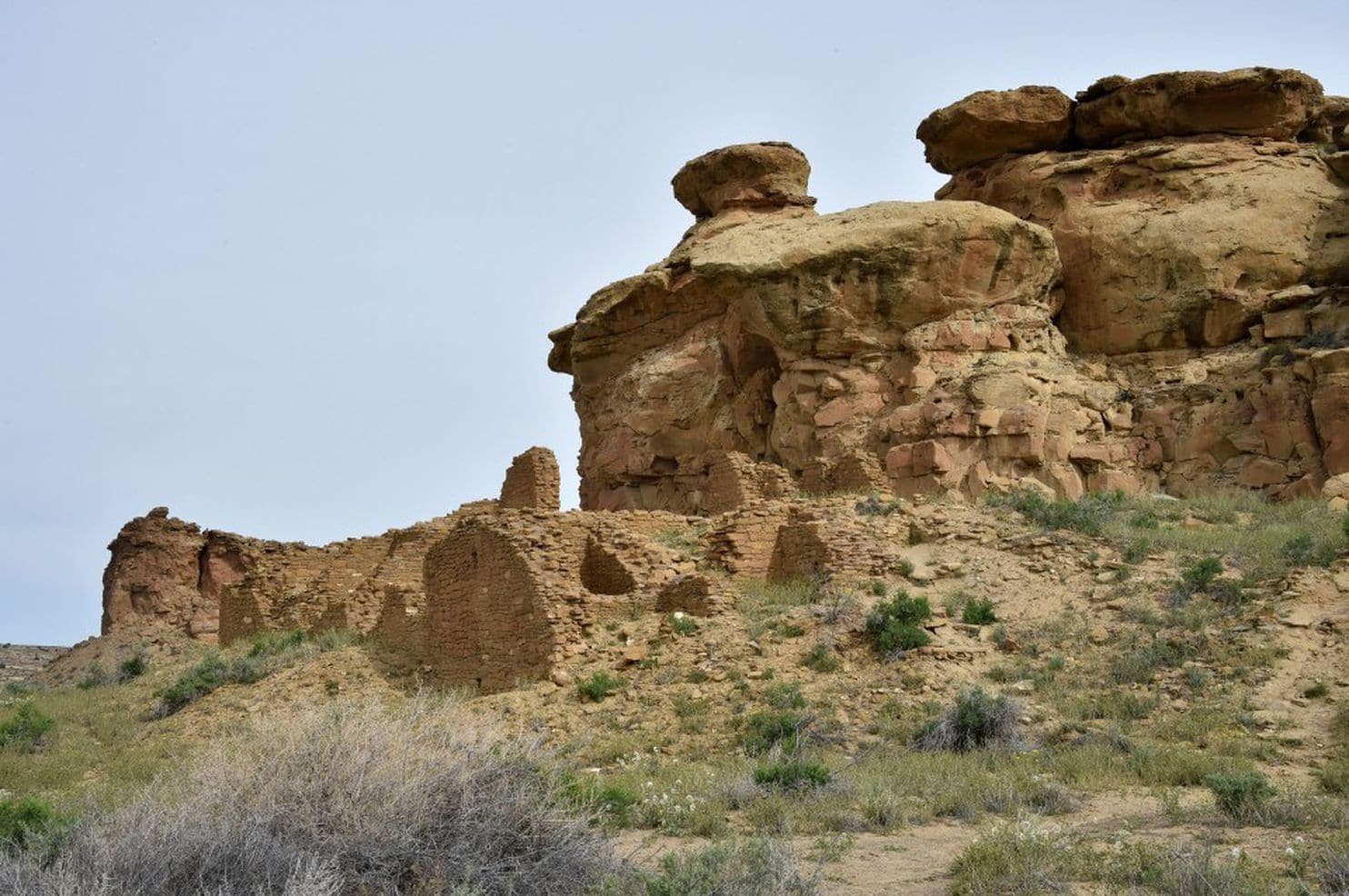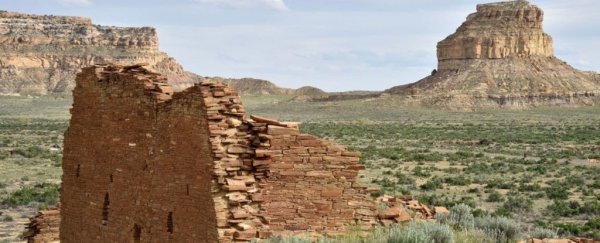During the eighth century, a new kind of civilization arose in New Mexico's Chaco Canyon.
It started a social movement that swept across what is now the U.S. Southwest, transforming people's beliefs about how to live, worship and farm. For the next six centuries, Ancestral Puebloan peoples built their communities in imitation of the ones at Chaco, celebrating its culture.
But as generations passed, that culture became a rigid tradition, representing a history that some people wanted to escape. As the 14th century drew to a close, the entire Chaco population abandoned the canyon, never to return.
For archaeologists, the Chaco phenomenon offers a chance to understand the rise and fall of a cultural ideal. Though this ideal may have originated between the walls of Chaco Canyon, its power reached far beyond.
When conditions changed, it appears that the Puebloan people survived only by letting go of tradition.
Some of the most distinctive archaeological sites in the United States show what remained when people turned their backs on Chaco after centuries of adulation.
Visitors to Chaco Culture National Historical Park in New Mexico can wonder at the remains of 12 "great houses" in the rocky landscape. These monumental sandstone dwellings contain hundreds of rooms, sometimes towering five stories high. The canyon once teemed with people who amassed great wealth.
They also influenced other communities. One hundred miles to the north, in what is now Mesa Verde National Park, people shaped their settlements to resemble those at Chaco Canyon.
Perhaps the most famous is called Cliff Palace. It's a great house designed to fit snugly in the crevasse beneath a bulging, rocky overhang. From a distance, the dwelling is almost invisible.
Close up, it's an architectural marvel of perfectly interconnected forms, where square walls meet soaring curves of wind-carved stone.
Elsewhere in the region, people in smaller Puebloan villages imitated the Chaco style too.
Even when they didn't have the resources to construct great houses, they always re-created the most striking part of great-house architecture: round, subterranean ceremonial rooms known as great kivas.
Though kivas were part of Puebloan public life before Chaco Canyon's cultural dominance, the great-kiva tradition there brought an air of formality to these buildings, where benches and sumptuous fire pits had to be arranged on the floor just so.
It seemed that everyone wanted to live like they did in Chaco Canyon. And then times changed.
Chaco conservatism
University of Arizona anthropologist Katherine Dungan studies a group of Ancestral Pueblo settlements hundreds of miles from Chaco Canyon on the border between New Mexico and Arizona.
Most of these settlements date to the 1000s, about 300 years after the rise of Chaco, and all of them have kivas that reflect aspects of the Chaco style.
Dungan calls it "Chaco conservatism." She means that people were conserving older styles, but she's talking about cultural conservatism, too.
"You have people who are replicating and repeating an ancient tradition," she said.
But what was that tradition?
Dungan and other archaeologists believe that Chaco culture was a form of religion, but it was also highly political.
In the 700s, small villages in Chaco Canyon blossomed into much larger settlements centered around great houses with multiple kivas.
Great-house residents accumulated wealth on an unprecedented scale, with storage bins full of turquoise, cacao and other luxuries imported from Mexico.
Their kivas were roofed with enormous pine timbers that laborers carried more than 60 miles from the Zuni mountains.
 Ruins of Pueblo Bonito house at Chaco Culture National Historical Park. (Mladen Antonov/AFP/Getty Images)
Ruins of Pueblo Bonito house at Chaco Culture National Historical Park. (Mladen Antonov/AFP/Getty Images)
Meanwhile, ordinary people in Chaco Canyon led relatively humble lives, with few possessions. The distance between their experiences and those of people in the great houses grew over time.
People in great houses dined on fancier food, such as elk and deer, while others ate small game.
Still, outsiders flocked to Chaco Canyon, lured by the promise of plenty and aided by a network of roads that joined the canyon's great houses to outlying areas.
Over the next few centuries, united by Chaco religion and trade, far-flung villages came into contact with one another and people moved freely between them.
Dungan noted that migration was always a pattern among the Ancestral Pueblo, but during the 1000s it reached a fever pitch.
As the population grew, people cleared nearby forests to plant corn.
It seemed like a good idea until Chacoans belatedly realized that the forests were home to the deer whose meat and hides they prized.
Just as the deer supply began to dwindle, a drought hit in the 1100s, devastating crops.
For the next couple of generations, we see skeletal remains marked by violent death throughout the Pueblo world. Bones show signs of blunt-force trauma, mutilation and burning, while mass graves suggest that there were massacres.
What happened in the Southwest after the height of Chaco's influence is remembered by the Pueblo tribes living in the region today.
Alfonso Ortiz, an anthropologist from the Ohkay Owingeh Pueblo tribe, recorded many traditions of his own people in his book The Tewa World.
He writes that elders had "detailed knowledge" of a Chaco-influenced region to the north where he speculates the tribe may have originated.
The Tewa origin story describes a series of difficult migrations, as does the origin story of the Hopi, another Puebloan tribe. It's possible that modern tribes may be recalling their migration away from the unstable world that Chaco made.
Pennsylvania State University computational archaeologist Stefani Crabtree said the evidence paints a portrait of a great civilization challenged by political problems and environmental disaster.
Crabtree combines data science with archaeology to build computer models of Ancestral Pueblo communities — "kind of like 'The Sims,' " she joked.
Using data about population density, climate and food availability, her simulations can predict what kinds of social structures would emerge.
"When things are good, hierarchy develops," she said. "But that falls apart when climatic conditions make it harder."
Another drought hit the Southwest in the late 1200s, and suddenly there was another spike in migrations. But this time, people left the Chaco world permanently.
Cultural transformation
That's when things get interesting. As people fanned out from Chaco and Mesa Verde, we see new kiva styles emerging in outlier communities.
In the northern parts of Dungan's study area, kivas grow much larger and more informal. Sometimes people even built them with no roofs and a simple, shallow fire pit that would never pass muster in the formal world of Chaco Canyon.
Some of these kivas are placed in open plazas so large they could hold everyone in the village, plus everyone in neighboring villages.
Meanwhile, in the south, a Puebloan culture called Mogollon took hold. Over time, Mogollon kivas grew smaller, rectangular and even more private.
All these communities were roughly the same size, and their residents lived as farmers in very similar environments. These changes, said Dungan, are "not a product of natural differences, but different choices being made."
Chaco conservatism was being transformed by social experimentation.
 Ruins of Casa Chiquita house at Chaco Culture National Historical Park. (Mladen Antonov/AFP/Getty Images)
Ruins of Casa Chiquita house at Chaco Culture National Historical Park. (Mladen Antonov/AFP/Getty Images)
It's tricky for scholars to know exactly what these transformations mean. University of Pennsylvania archaeology researcher Joseph "Woody" Aguilar is enrolled in San Ildefonso Pueblo tribe, and he cautioned that archaeology can only "hint at" what really happened at Chaco Canyon.
We can't be sure whether these villages were rejecting Chaco culture, or simply reimagining it for a new era.
Dungan describes the new great kivas as "hybrid" forms, heavily influenced by ideas from a diversity of migrating groups.
Maybe the large kivas to the north represented a "melting pot ideal," Dungan mused, where there was pressure for everyone to attend the same events "to be part of the same thing."
And in the south, perhaps newcomers from different places wanted to "remain separate entities," so they created smaller, more exclusive kivas that could be used serially by different groups.
As Aguilar noted, however, there's a lot of social complexity surrounding kivas. It's very likely that even people using them 700 years ago didn't always agree about what they meant.
What seems certain, at least to University of Notre Dame archaeologist Donna Glowacki, is that the Chaco world was collapsing.
She studies the period when people abandoned the traditional Chaco centers, and she says the strife and environmental troubles were heightened in the early 1300s.
"That's when people say, 'We really do have to move somewhere else, and we can't keep the kinds of social organization … connected to Chaco.' "
She sees the hybrid kiva forms as signs that Ancestral Puebloan culture was highly resilient, capable of changing rapidly to deal with "dramatic climatic shifts."
Crabtree added that kivas are ultimately places for social communication, whether in religious rituals or community meetings.
"As their societies changed, they invented new ways to talk to each other," she said. And that helped them find "new ways to deal with social friction and friction with the ecosystem."
Today, Puebloan tribal lands form a vast and distant semicircle around the empty places that were once at the center of the Pueblo world.
Pueblo tribes continued to thrive long after Chaco's abandonment — indeed, they went on to lead a successful revolt against colonial occupation in 1680.
But it's possible they did it by leaving Chaco's political system behind. We can see traces of what helped them survive in hybrid kivas that honored ancestral traditions but thrived on changes brought by diverse groups.
By learning to communicate in new ways, they built a culture that survived.
2018 © The Washington Post
This article was originally published by The Washington Post.
